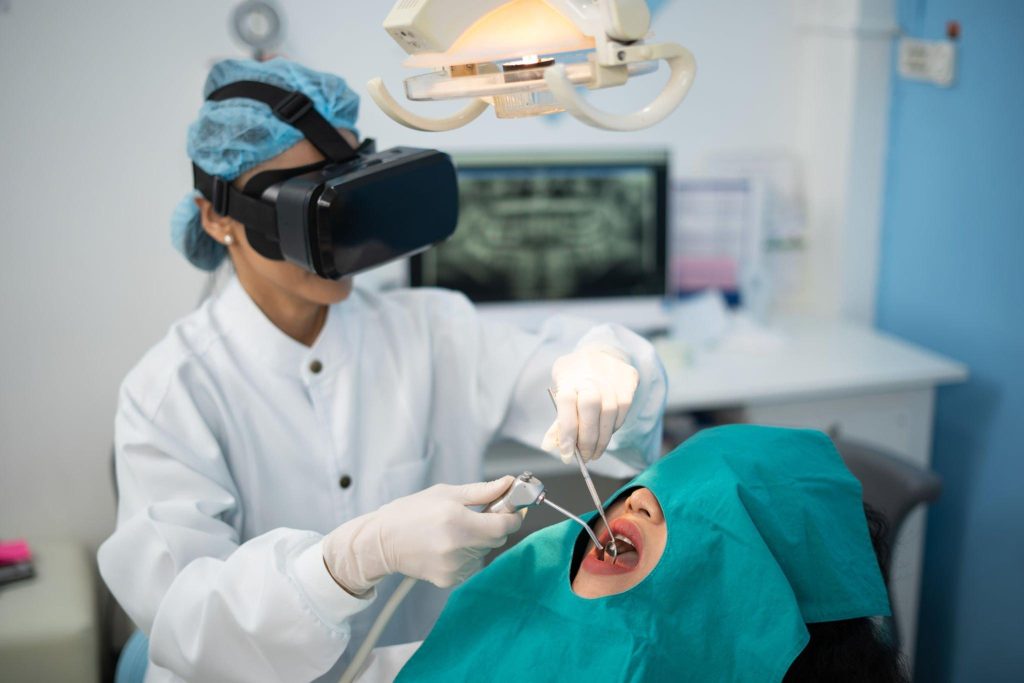Despite innovations making dental visits far more comfortable over recent decades, many patients still approach their dentist’s office with a mix of uncertainty and apprehension. However, familiarizing yourself with the most frequently performed treatments ahead of time goes a long way towards easing worries. This overview of modern cleaning methods, cavity fillings, tooth extractions, root canals, dental crowns, and other routine procedures explains what to expect so you can relax and focus on maintaining your oral health.

Regular Dental Cleanings and Checkups
Prevention Beats a Cure
Consistent exams and cleanings every 6 months provide a critical foundation for excellent lifelong oral health by:
- Removing mineralized tartar adhering to teeth to prevent gum infection and bone loss from periodontal disease progression. Manual scraping combined with ultrasonic devices polish away built-up calculus.
- Eliminating troublesome staining for a brighter, more confident smile. Air abrasion systems blast away tenacious external discoloration gradually dulling enamel.
- Detecting emerging problems like cavities or cracked fillings early so they remain small and require less complex repairs. Xrays help identify issues between teeth too.
- Catching precancerous lesions on soft tissues before malignancy develops. Vital dye assays and Velscope instrumentation aid visual identification.
- Monitoring tooth movement, bite alignments, occlusion patterns, and other developments impacting function or aesthetics.
The annual insurance coverage allotment for 2 free cleanings ensures you maximize prevention and early detection of brewing problems for less complex, lower cost treatment down the line.
Tooth-Colored Composite Fillings
Stronger, More Aesthetic Materials
When dental decay manages to infiltrate enamel to reach the softer inner dentin, cavity formation triggers action. Left untreated, expanding infection progresses deeper towards inner pulp tissues, risking abscess, bone loss, and tooth loss.
Treating early caries aims to excise all decayed material using drills or air abrasion before infection endangers deeper structures. After thoroughly cleaning and preparing the remaining intact tooth structure, more durable filling material gets inserted to replace missing volume, seal off sensitivity, and prevent further spread.
While amalgam reigned for over a century with its strength, adaptability, and longevity, metal materials create unaesthetic grey spots visible when smiling. Instead, modern tooth-colored resin composites better mimic natural translucency. They also bond chemically with etched enamel to seal cavity margins against microleakage of fluids that promote recurrent decay.
With over a decade of clinical success for standard cases, bulk fill composites now enable thicker fillings placed in one step, skipping lengthy layering procedures. This greatly reduces treatment lengths while enhancing strength. Just cure with special light wands.

The Latest on Dental Implants
Replace Missing Teeth Permanently
Losing natural teeth impaired necessary oral functions for centuries – until dental implant technology arrived with titanium anchors fusing to jawbone for support. Implant-secured replacements now give patients firmer biting force for improved eating capacity compared to traditional bridges or removable dentures.
These tremendously successful devices involve a small surgical procedure where the periodontist inserts a biocompatible titanium screw into healed extraction sockets. After the anchor fuses to surrounding bone over 2-6 months, a precision abutment gets attached protruding through the gums. Finally a custom-matched porcelain crown attaches to complete the realistic tooth replica. Anchored within jawbone, dental implants simulate natural sensory and biomechanical feedback better than any other tooth alternatives.
With success rates exceeding 95% over decades, even complex cases involving multiple missing teeth prove manageable using staged placement protocols over time. While higher initial costs exceed other options, their functional advantages and longevity deliver substantial long term value.
Coping with Wisdom Teeth Issues
Impactions Bring Big Problems
As adolescent jaws finish maturing, the final molars termed “wisdom teeth” sometimes lack room to align properly. These impactions then require extraction to prevent complications like infection, cyst formation, decay in adjacent teeth from crowding, bone damage, or sinus problems upstairs.
Unfortunately, attempting to remove impacted lower wisdom teeth often destroys surrounding bone and nerves. This may cause permanent lip or tongue numbness despite meticulous surgical techniques. The nerve risks, recovery times, and difficulty extracting broken tooth fragments mean that most oral surgeons now recommend early removal by age 20 before full root formation and jaw fusion, provided adequate space exists to tease the teeth out mostly intact.
With early intervention, healing proves less traumatic before infections take hold. This minimizes surgical risks and lets you resume normal activity faster. Postponing action until serious problems appear requires more invasive procedures. So stay proactive about periodic dental evaluations and address wisdom tooth crowding early.

Seeking Root Canal Treatment
Save Infected Teeth Rather Than Pull Them
Despite extensive decay or trauma severely injuring a tooth’s pulp core, extraction need not remain the only option thanks to root canal therapy. This intricate treatment drills into the tooth crown under precise radiographic guidance, locates pulp blood vessels and nerve bundles housed inside root caneals, then completely excavates out the entire pulp system before carefully sealing and restoring the vacant central chamber.
Successful cleansing and sterilization of the inner expanse prevents spread of infections into surrounding bone requiring tooth removal. While the inert tooth no longer senses hot or cold thereafter, preserving natural crowns maintains chewing capacity and outperforms bridges or removable dental prosthetics.
Advanced Technologies Expand Treatment Horizons
With accumulating evidence now supporting focal disinfection of solely the affected root as the primary contributor to health risks, root canal protocols advanced from conventionally treating entire lengths of all canals to more precision targeting of solely the involved roots or canal regions. This spares unaffected portions using microscopic examinations and additional x-ray angles to differentiate diseased zones.
Additionally, integrating lasers now enables water-free, bacteria-free preparation of intricate anatomy with better chance of longest-term resolution. Pairing laser eradication with antimicrobial rinses and bioceramic sealants best combats endodontic (inner tooth) infection for enduring positive outcomes keeping natural teeth intact.

Repairing Teeth After Severe Trauma
Save Natural Teeth Whenever Possible
After severe biting injuries, sports collisions, vehicle crashes, or violent falls rock a tooth forcibly sideways, extensive damage to surrounding bone, gum, and neurovascular supply demands urgent treatment to save that tooth. Depending on exact fracture patterns through crown, roots, or bone, various repair protocols aim to re-implant and stabilize the natural tooth rather than just extract it.
If knocked completely out of socket, immediate re-insertion of an avulsed tooth within limited timeframes affords best survival odds. Stabilize initially with a soft wire splint for comfortable healing. For non-avulsed but fractured teeth, bonding stubby fragments together into one repaired piece or sealing cracks using bonded composites constitutes first line treatment. If those measures eventually fail despite rigorous efforts, root canals, gum surgery, or prosthetic crowns help retain natural tooth structure. Extracting traumatized teeth remains an absolute last resort given the risks of shifting teeth, bone resorption, and reduced chewing capacity.
Advanced Restorations for Severe Tooth Loss
Beautiful, Durable Rehabilitations
Losing multiple back teeth over time not only impairs chewing capacity but also shifts remaining teeth out of alignment eventually. This disrupts bites and leads to restoration breakage or jaw joint problems. But modern materials like durable zirconia alongside digital imaging systems transform extensive reconstructive care.
After photographs and dental impressions provide critical treatment planning information, computed analysis and design software inventories all remaining teeth then constructs a virtual wax-up of an ideal planned bite. This digital blueprint then gets translated chairside into custom-milled materials for reconstructing a balanced occlusion. In cases of severely diminished tooth structure, full-arch bridges efficiently restore function and aesthetics without messy removable dentures. Implant-assisted bridgework syncs lifelike chewing sensations through osseointegrated anchors fused within jawbone for unmatched stability.
Thanks to these transformative technologies, restoring functional beauty and pain-free alignments proves highly attainable despite substantial deterioration or trauma across years. Even profoundly debilitated dentitions regain form and function through carefully sequenced combination therapy.

Conquering Dental Phobia
Calming Care for Anxious Patients
Despite outstanding medical advancements, needle phobia and post-traumatic stress from past negative experiences leave many avoiding treatment due to extreme anxiety. This only worsens existing problems and prevents routine care necessary for intercepting issues while still easily treatable.
Compassionate practitioners now offer relaxing modalities like:
- Oral sedation using anti-anxiety medications such as valium to reduce tension.
- Laughing gas inhalation for conscious sedation helps distract nervous patients.
- General anesthesia administered by anesthesia professionals for extensive procedures enables complete unconscious relaxation.
- Soothing audio selections to shift focus from noises evoking anxiety.
Don’t let fear of discomfort hold you back any longer. Discuss anxiety openly with your dentist and inquire about available anxiety relief options so you can get the optimal care you deserve comfortably.
Modern dentistry prioritizes patient centered care through preventive pathways to sustain your natural smile securely for life. But even when problems develop requiring intervention, today’s minimally invasive precision approaches maximize conservation of healthy tooth structure with stronger, more aesthetic restorative materials to keep you smiling confidently for decades.
